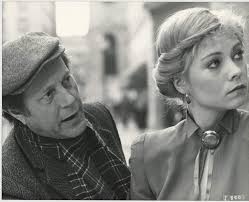From Jamie Kreimer’s The Wandering Mind: What Medieval Monks Tell Us About Distraction.
Archive for the ‘Image Craving’ Category
Monks: They’re Just Like Us
May 28, 2023What I’m Like When Asked to Rate Something Online
January 26, 2023Spirits!
October 20, 2022So they’re auctioning off the entire contents of the late Elizabeth Wurtzel’s apartment. Most of it is actually kind of ugly and not cool (she has a weird amount of framed art from CB2?) but for the low, low price of $85 (as of now), you can get her AA sobriety chips! In the words of AC, “This feels cursed.”

Best Hat Ever
April 1, 2022The Real Star
August 25, 2021Back when I was a wee sophomore in college, I developed this cherished ritual: maybe once a month or so, when my group of friends was going out or studying or something, I’d smoke *something or other* and head over our local outpost of the legendary (and much missed!) Kim’s Video. There, I’d browse aimlessly through the selection and just pick a DVD or two, bring it back to my dorm room, and escape into another world. Sometimes my selections were because I knew I was supposed to like those directors––like L’Avventura, or Hannah and Her Sisters––and sometimes it was based solely on the Criterion imprimatur. More often than not, it was entirely at random.
I had surprisingly good success with this (“surprising,” because I wasn’t taking film classes and clearly had no idea what I was doing). Even the notoriously judgmental Kim’s staff occasionally nodded in begrudging approval of my choices. I still own a lot of DVDs I purchased then, and to this day, I count some of my filmic discoveries of that time among my favorite movies ever, including the terrifying Dutch-French thriller The Vanishing (which I’ve actually never quite had the stomach to re-watch) and Robert Altman’s atmospheric, hazy Three Women.
But I had actually forgotten about one of the best finds of this era, Nicholas Roeg’s 1980 erotic thriller (kinda?) Bad Timing, until I fell down a mini-wormhole watching Criterion Closet Picks on YouTube (Ben Sinclair and Isabelle Huppert selected it)! Bad Timing is the story of the beautiful, enigmatic Milena Flaherty, portrayed by Theresa Russell (who would later go on to marry Roeg) who seduces the clinical, controlling Dr. Alex Linden, an appropriately cerebral Art Garfunkel. The two meet at a party and embark on an obsessive love affair, which eventually reaches a devastating, violent climax. The film is set in Cold War Vienna, kind of the fifth main character here, which is depicted as equal parts decadence and paranoia, as evoked by alternating shots of paintings by Klimt and Schiele.
I could have sworn I had the Criterion DVD of Bad Timing, but I guess I lost it somewhere in the ensuing decade-plus because I don’t see it on my shelves. Bummer, as it isn’t, even now, easy to find: the film’s distributor released it only briefly in 1980, calling it “a sick film made by sick people for sick people,” and it remained largely unavailable until Criterion released in the early aughts, which is around when I would have nabbed it. (It’s now sold out on that site but there are some slightly-too-expensive copies on Ebay.) But luckily for me, you can rent it on iTunes, so the other night I charged my card and settled in for an evening of nostalgia.
It was fascinating revisiting something that I remembered not only for itself, but for the particular reaction I had to it at that point in my life. For example, I very much wanted to be glamorous and mysterious in exactly the way Theresa Russell was, so encountering her character was like locating a new icon. And yet while watching it, I remember feeling like I had to consciously overlook one aspect of her character I found truly ridiculous: her HAIR! Throughout the movie, Russell dons a truly baffling array of hairstyles, from the futuristic to the schoolmarmish. Herewith, a compilation (incomplete):
This look is from the scene where Alex and Milena first meet, at a party. It’s hard to tell from this picture, but her hair is in a bun towards the front right side of her head, and obviously curled throughout. (Not clear if her hair is naturally curly or straight, based on other hairstyles.) This is the first of a few times she opts for this front-of-the-head bun thing, to which I say: why? Just, why?
Another angle. You kind of have to see her in motion to get a sense of how hideous this is.
Final shot. Sorry for the poor photo quality.
This is from the scene when she’s separating from her husband, played by Denholm Elliot, at the border of (then) Czechoslovakia. This is one of my favorite of her styles: a kind of corporate hausfrau situation? I’m sure there is a thesis written by an FIT student out there somewhere that explores the origin of this style.
Back view.
A similar look, from a scene where Alex Linden gives her a personality test. (This photo is of Roeg directing Russell.)
Here is Russell in some classic Von Trapp braids, which were a specialty of mine in my early and mid-twenties. (I could do my hair this way without looking in the mirror!)
Okay here is where it gets even weirder: after Alex asks Milena to move in with him, she goes back to Bratislava to have farewell sex with Elliott, and then does herself up nicely in this fancy rabbit fur situation and… some kind of space age hair wave? This is truly confusing both on an aesthetic and practical level (meaning, how would one even accomplish this? Some kind of claw clasp)?
Really, why?!
And my absolute least favorite of the bunch: hair severely straightened and then put into a side-front bun, with a few loose baby wisps for added ugliness. Mystifying!
Aside from the styles I liked on this list, there are some scenes where she looks truly spectacular, mostly when her hair is wild and down or the little strands at the side are pulled back neatly with small clips., kind of like this, or in the bar scene where she makes out with a rando and is rocking an eagle t-shirt. You’ll have to watch the movie to see those looks.
So in the end, I thoroughly enjoyed the re-watch, despite feeling occasionally distracted by the odd coifs. On a more serious note, it was interesting to watch it now, knowing how sordid people thought it was upon its release––not that the denouement isn’t a terrible violation, but in the decades since, we’ve been subject to so much depraved behavior on screen––just to pick one example, anyone seen Antichrist? That was not a good day, for me––that it weirdly registers as anticlimactic, or maybe just not something that would induce a moral panic? Or perhaps I felt that way this time just because I knew what was coming? (Don’t cancel me, this is a purely academic consideration, obviously rape is terrible!) Oh and one last thing: anyone care to weigh in on whether Harvey Keitel is supposed to be like, an actual Austrian or an American expat who somehow got a job in the Austrian police? Anyway, the real moral of this story is a) buy me this DVD and/or b) figure out how to get me invited to do a Criterion Closets Pick.
Fashion Inspo
February 7, 2021Recent fashion inspiration includes:
Claire Nivola’s illustrations in The Friday Nights of Nana (would seriously wear every dress in this book).
Florence Pugh’s outfits in Lady Macbeth. You can’t really get a good feel for it in this picture but she wears the most ridiculously amazing salmon-colored dressing gown thing.


The Most Romantic Promise
December 28, 2020Mask as Religious Garment
September 11, 2020I might get in trouble for this, but: I can kind of understand why people would have some confusion, or even skepticism, about masks right now. The experts did a 180 in terms of mask advice early on in the pandemic, as we all remember, and even though the guidelines have remained mostly the same for a while now (insofar as we’ve all been told to wear masks) there has been some conflicting data on the topic: for example, a recent-ish study showed that masks made of certain kinds of material were actually actively unhelpful, while different health authorities in different states have mandated mask usage in different environments, i.e. outside all the time, or only when you can’t socially distance, or even in your own home. Recently, researchers have floated the possibility that the mask might be just not-protective enough to actually engender immunity to Covid-19 in the wearer by exposing them to small particles. This is purely speculative and is not really relevant to the conversation at hand, just to say that I get why people would be confused, generally speaking.
Let me be clear: I believe the research that shows masks help stop the spread of Covid-19. As someone who is not a scientist or a doctor, I don’t know exactly how the process works––I can give you a sketch but not a detailed explanation––but I buy it. And I totally do not care about people who think that masks are bad for you because they cause your teeth to rot or your oxygen to get low or whatever else they’re saying these days, because often these people are the same “medical freedom” fighters who are always talking about the body is a miraculous healing organism and can survive cancer without chemo, so if the body can do that then surely it can breathe through a thin cloth every now and then? Some consistency, folks, please.
For those people, and for others who struggle with masks, I would like to propose another way of viewing them: as religious garments, which are non-functional, occasionally talismanic pieces of clothing that serve an ideological purpose rather than a practical one.
Many religions feature such types of garments. There are the famous “Temple garments,” referred to also as Mormon underwear, which I used to make fun of liberally and now would never, bequeathed to Mormons during their initial participation in an endowment ceremony. Sartorial signifiers of religious affiliation are hugely important in Plain Anabaptist traditions––you’ll remember the joke from Weird Al’s “Amish Paradise” about buttons, although the Amish actually do wear buttons–– as well as Orthodox and, to an even greater extent, Haredi Judaism. From kippot (yarmulkes) to shtreimels(round fur hats worn by married Hasidic men on Sabbath) to the monochromatic, floor-length dresses worn by Amish women and the suspenders worn by their husbands, Judaism and Anabaptism in particular make great use of the fashion as semiotic communicator. The list goes on: having specific uniforms for cloistered Catholics like vestments for priests, the hijab for women in Islam, robes of specific colors for Buddhist monks, and so forth. You get the idea. Particularly in more conservative sects/expressions of major religions, there is an intense focus on the minute detail of the clothing, garments or accessories: for Hasidic women, how long the hair of your wig is, or whether you wear a snood or a tichel, says a great deal about where your ancestors came from, what sect you belong to, and/or how liberal you are. Years ago, I met an Amish Mennonite convert who was also an academic sociologist who had written an entire book on the variations in Amish women’s head coverings and what they symbolized. Though an outsider would spot the difference between a black head scarf and a gauzy white covering for a bun, the sociologist delved into differences so subtle––type of pleating, width of band––as to be completely imperceptible to the uninitiated, but deeply meaningful to the Amish themselves.
What does this type of garment do for its wearer? There are two main purposes, and how much the wearer emphasizes one or the other depends on a number of factors including general level of religious conservatism. First, in some cases, like with the Temple garments and tzitzit, there is the idea that they literallysupernaturally protect you from harm. But the broader one, and the one more interesting to contemplate here, I think, is the way these garments serve as a visual shorthand for tribal affiliation. (That can be cultural or religious tribal affiliation, but in the case of many faiths, like the Amish and Haredi Judaism, the two are so intertwined that they can be indistinguishable both for the religious person and the observer.) There are the tiny signifiers––like the bowsworn on beaver hats by Hasidim, on which side depending on the wearer’s sect––and the more overt ones, like hijab = Muslim. Whatever the prominence, the dress lets everyone the wearers interact with know immediately who the wearers are (in broad strokes, of course): from their ethical precepts down to the nitty gritty details of their diet.
An example from my personal life: I dress modestly, which means I basically cover my knees and elbows and wear dresses and skirts. I don’t do this 100% of the time––I wear pants a few times a year when I’m feeling spunky, and sometimes my dresses don’t fully cover my knees, which I don’t really love but that has more to do with style than religiosity––but mostly, I follow the precept of what we call tznius, or modesty. I definitely do notdo it because I feel like men are wanton sexual beasts and I must protect them from my skin, and I don’t even really do it because I believe Gd wants me to (the Jewish texts are not particularly persuasive when it comes to this argument). Mostly, I do it because doing so marks me as a part of a community, it lets other people know how I identify, it tells them certain things about how we should behave together as humans interacting without my having to explain it (i.e. don’t offer me bacon-wrapped shrimp, for instance, or don’t go in for a hug if we’re not related/married and you’re a dude). Although to be fair, modesty being as unstoppable a trend as it’s proven to be, and liberal Orthodoxy being what it is, many people might not immediately get this.
Lots of people think this stuff is the height of religious stupidity. Why would the God or a god care what you wear? And why would people think their choice of shirts made them more moral, or even holier? I get that. There are definitely cases where people obsess over the vehicle at the expense of the engine, and then, when there’s some kind of vehicular malfunction, their hypocrisy is that much more embarrassing. Maybe sometimes they’ve confused visual piety for actual piety (in some environs, that’s understandable, because the education is sub-par, or there’s inter-generational trauma that leads to fanaticism or a general blending of cultural expression and religious expression) and they think that as long as they’re wearing the outfit, they don’t need to worry so much about behaving ethically towards others or engaging in study or being mindful of other specific religious virtues. Kind of like the faith version of the Peltzman Effect. But in the best case scenario, wearing distinct garments that point to their religiosity reminds the wearer that they are beholden to ideas greater than themselves, and that they should conduct themselves in an overtly dignified and considerate way particularly in public but ideally everywhere.
So this is where the mask comes in (and yes, I’m admittedly writing this thinking of the obvious overlap between Evangelical Christianity and Covid-deniers/mask skeptics): if you just can’t wrap your mind around the idea that the mask might provide us some literal protection from the virus particles, what about, instead, viewing it as a cloth that symbolizes your belief in the idea that, as members of society, we have to make a covenantto protect each other? Your willingness to make yourself a little uncomfortable (have you ever dressed modestly in a sweltering New York City summer?) so that people will know, upon meeting you, that you are committed to conceiving of our society (micro, as in local community, and macro, as in world) as a holistic entity that needs constant vigilance and nurturing? Your desire to show others, via how you treat your physical being, that you care about them, and that you are aligned with the tribe that values that caring?
Do I think this argument would sway those who need to hear it most? No. As we know, the religious people who are the most mask-averse are Evangelicals, and most of the American Evangelical world (bar the Duggars) did away with most of their outward expressions of faith a long time ago, and also have found a way to de-emphasize the Christian ideals of charity, kindness, non-resistance, and other community-oriented (versus self-oriented) principles and replace (?) them with a warped and relentless entitlement and vague sense of “liberty.” I don’t know much about how late-era capitalist Evangelism has become what it has, but I could probably take a stab at formulating a theory if you paid me (call Siobhan).
Final observation: would this make a face shield the niqab of the mask set? I kid!
WHAT IN THE HELL DOES YOUTUBE ALGORITHM THINK OF ME?!
August 6, 2020Recommended video for me. I honestly would be curious to know the answer to the above question (if an algorithm could pass judgment, that is).

















